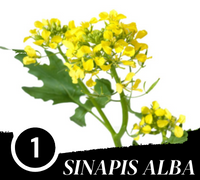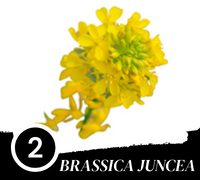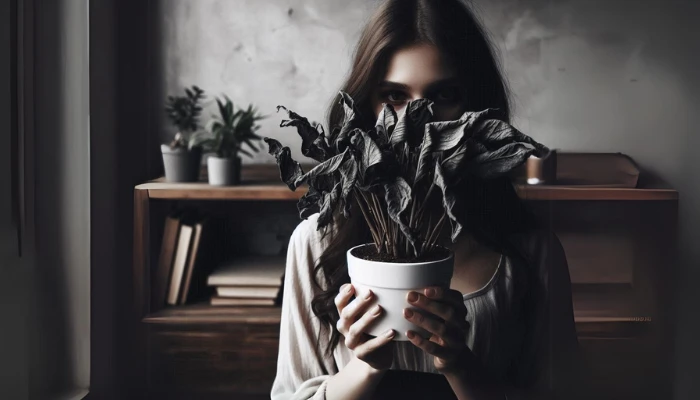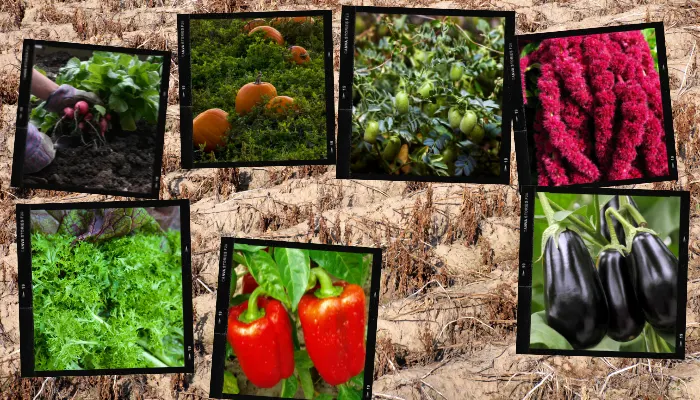When we think of mustard, most of us immediately think of the bright yellow condiment we put on our sandwiches and hot dogs, but there is so much more mustard has to offer.
Mustard greens and seeds are a great way to spice up your meals, not to mention, the amazing health benefits they provide.
Growing your own mustard in your home garden is an easy way to reap those benefits and enjoy a delicious peppery flavor to your salads. Use this information to get to know and grow fresh mustard right from your backyard or balcony.
History and Varieties of Mustard
Mustard is native to the Himalayan region of India, it was grown to be eaten and also for its medicinal properties.
There are two species of mustard Brassica and Sinapis. These are the three kinds of mustard you’ll see available:

Sinapis Alba
This is our mild white or yellow mustard. It grows wild throughout North Africa, Middle East and Mediterranean Europe. Of course, it's now the most popularly grown mustard for commercial purposes worldwide.

Brassica Juncea
This is widely known as oriental mustard. Originally from the Himalayan region and now grown commercially in India, Canada, UK, US, Denmark and Bangladesh.

Brassica Nigra
The famous black mustard is derived exclusively from this plant. Primarily grown in Argentina, Chile, the United States and a few European countries.
Mustard has been cultivated for centuries across Asia and Europe and has been eaten for over 5,000 years. The seeds and oils were used medicinally to treat a variety of health issues. Poultices were made from the ground seeds to treat respiratory ailments, sore muscles and joint inflammation.
The oil was used to treat fungal infections of the skin, antiparasitic, hives and eczema. Mustard seeds are still used by many cultures for their medicinal properties, and the greens are still an important ingredient in their diets.
Nutritional Benefits and Medicinal Uses of Mustard
Mustard greens are low calorie, high in fiber, vitamins, minerals and antioxidants, and this makes them one of the most nutrient dense foods in the world when you look at the ratio of nutrients to calories. Here is a list of the health benefits adding mustard to your diet can have.
- Helps protect against heart disease
- Helps protect against diabetes
- Helps reduce high cholesterol levels
- Supports healthy liver function
- Boost immunity
- May reduce menopausal symptoms
- Can help prevent against certain cancers
- Boost antioxidants
- Helps protect skin
- Boosts immune system
- Supports eye health
The chemical compound in mustard that gives it the peppery, bitter taste is called glucosinolates, these compounds have been found to have natural insect repellent properties and to be a natural cancer fighter as well. This is definitely a plant we should all be eating.
Interesting Mustard Facts
- Mustard greens are commonly called Indian mustard, Chinese Mustard or Leaf mustard.
- Canada and Nepal are the world's main producers of mustard seeds.
- Recent research is studying varieties of mustard that have high oil content for use in the production of Biodiesel.
- After pressing seeds for oil, the mash that is left has shown to be an effective pesticide.
- Mustard plants contain volatile oils which have strong antimicrobial properties, and this makes it a perfect fall cover crop to use as an organic pesticide for weeds and soil borne pathogens.
- Mustard seeds have been found in Ancient Greece archaeological digs from as early as 5th century BC.
- Adding a little vinegar or lemon juice at the end of cooking mustard greens, will help tame the bitterness.
- Mustard seeds are used in pickling, making sauerkraut and vinaigrette.
Growing Mustard for Greens and Seeds
Mustard is easy to grow in any garden, as well as in a container garden. Mustard prefers to grow in cool weather and should be planted in spring about three weeks before the last expected frost date in your area, or it can also be planted about four weeks before the first expected frost date.
You should avoid any planting in the summer, mustard will bolt (flower) quickly in warm weather, which will decrease the quantity and quality of your seed harvest.
You can start your seeds indoors if you prefer. Furthermore, you will want to start them about 3 weeks before you plan to plant. To do this, fill a seed starting tray or container with a soilless seed starting mix that has been pre moistened. Place seeds in a sunny window. They should start sprouting in 5-10 days, they will grow fast after sprouting.
Getting Your New Mustard Garden Ready In 7 Easy Steps
Choose a location that will provide full sun or partial shade and good drainage.
- Choose a location that will provide full sun or partial shade and good drainage.
- If this is a new garden, remove the grass and till about 6 inches of soil up and mix in 3 inches of compost. This will increase the nutrient levels in your soil to give your plants a good start.
- If, place seeds about 1/2 inch deep and 2 inches apart. After the seeds have sprouted and have 2-3 leaves, you need to thin(remove some of the seedlings) them, so they are 6 inches apart. If starting with seedlings, just plant them 6 inches apart from the start.
- Once your seedlings are well started, and about 3-4 inches high, you should apply a layer of mulch around each plant as well as through the entire garden. The mulch will help the soil retain moisture and control weeds. It's important to remove any weeds you find to prevent them from absorbing the water and nutrients your plants need.
- To care for your mustard greens, give them 1-2 inches of water per week, be sure to water at the base of each plant to ensure the water gets to the roots. The soil should be moist but not water logged. During periods when the temperatures are warmer and the soil is drier, you may need to water more often. To know if your soil is dry, just stick your finger about an inch or so into the soil, if it feels dry, give them some water.
- Mustard plants don't need to be fertilized often, especially if you added compost to your soil before planting, but it's not bad to give your plants a little boost about halfway through the growing season by using a water-soluble fertilizer.
- If you would like to have a successive supply of greens available, you can plant seeds or seedlings every 2-3 weeks.
Harvesting Your Mustard Greens & Seeds
To harvest the leaves for use in salads or other dishes you need raw leaves, you will want to select the young, smaller leaves. These leaves are more tender and less bitter. If you’re planning on using leaves for cooking, you will want to select the larger, more mature leaves. These leaves are tougher and will withstand cooking better.
You can pick individual leaves to gather what you require for that day, or you can cut the whole plant.
Whichever way will work best for what you need to do.
To harvest for seeds, after flowering, your plants will produce pods which contain the seeds.
Once you notice pods on your plants, you will need to wait until they turn brown and become dry before picking the pods.
Be sure to not wait too long before picking the pods once they turn brown, if left too long they will pop and spread the seeds all over the ground.
The seeds can be eaten raw, or you can store them after drying. You can dry your seeds by spreading the pods out on a screen or old sheet and place them in a warm place for about 2 weeks.
After they have dried, gently crush the pods and place in a plastic bag and gently shake, most of the seeds should come out of the pods.
Check each pods for any seeds that may have stayed inside. Store your seeds in an airtight container.
More To Discover
- Is Your Container Herbal Tea Garden Providing You with More Herbs Than You Can Use? Time For a Side Hustle!
- Unlock the Secrets of Herbal Tea: Grow Your Own Tea and Savor Every Sip For Less
- Creating a Container Herb Garden on Your Balcony
- Don’t Know What to Do with Your Surplus Herbs from Your Herb Garden, Here’s an Idea for You!
Common Types of Mustard Plants, Commonly Grown in Home Gardens
- Japanese Giant Red Mustard
- Mizuna
- Tatsoi
- Southern Giant Curled
- Ruby Streaks
- Old Fashioned
- Red Garnet
- Spinach Mustard Tendergreens
Now that you have the information on why and how to grow mustard in your garden, make it a part of your families diet, your body and health will thank you.
Happy growing!

















